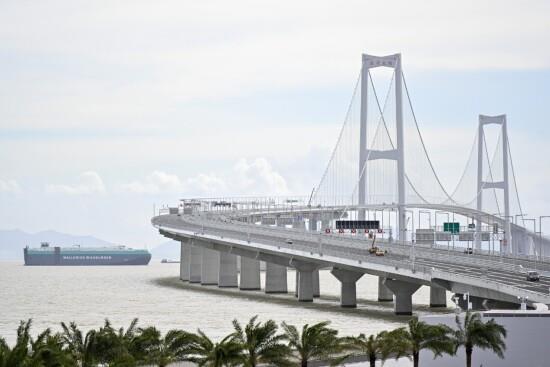|
EQS Newswire / 08/07/2024 / 15:00 CET/CEST
BEIJING, CHINA - media OutReach Newswire - 8 July 2024 - The Shenzhen-Zhongshan Link, a mega cross-sea passage in south China that consists of one underwater tunnel, two bridges, and two artificial islands, opened to traffic on Sunday.

| | A view of the Shenzhen-Zhongshan Link, a mega cross-sea passage in the Great Bay Area, June 27, 2024. |
Seven years on, Chinese designers and constructors have overcome some of the world's most pressing technical challenges, transforming the passage from a blueprint to a reality and setting 10 world records.
On Wednesday, China News Network interviewed some and discovered the stories behind the one of the most challenging cross-sea cluster projects in the world.
No room for error
This 24-kilometer passage, connecting Shenzhen in the east of the Pearl River estuary with Zhongshan in the west, has significantly slashed travel time between the two cities from about two hours to under 30 minutes.
It is equipped with numerous devices to ensure its safe and stable operation.
The construction personnel need to build a suspension bridge with a tower height of 270 meters and a main span of 1,666 meters approximately 15 kilometers off the coast. They also need to achieve millimeter-level precision in docking 23 immersed tubes, each weighing about 80,000 metric tons, on the seabed nearly 40 meters deep in the Lingdingyang sea. Additionally, within less than six months, they must create an island in the sea with an area equivalent to 19 international standard football fields.
Despite enormous challenges during the construction, these projects were all completed within the scheduled time.
Chen Weibin, General Manager of Technology Center and Project Manager of Shenzhen-Zhongshan Link Contract 9 for Precasting of Immersed Tunnel of CCCC Fourth Harbor Engineering Co., Ltd., introduced that "the construction process of the passage that adopted steel-shell immersed tube structures is irreversible and there was no room for error".
Without any lesson to learn from, the project team adopted 3D printing technology to develop a customized intelligent pouring system, saving 2,500 hours of machinery time.
Independently-developed key technologies
In the construction, breakthroughs in domesticating key technologies have also been achieved.
Suo Xuhong, Director of the Measurement Management Center of CCCC - First Harbor Engineering Company's Shenzhen-Zhongshan Link Project Management Department, introduced that over the past seven years, his team has generated over 170 patents, achieving eight major technological innovations and accomplishments, including rapid island formation and underwater push-type final joints.
For example, he elaborated that "facing complex geological and hydrological conditions, we independently developed the 'underwater 3D printer' -- a gravel leveling ship. We have achieved full localization of both hardware and software, with leveling precision and efficiency meeting the requirements for various specifications of immersed tube tunnel bed construction. Additionally, we integrated the BeiDou system into immersed tube construction for the first time in the world, and developed an integral prefabricated underwater push-type final joint."
Marine ecological environment outweighs cost
The construction of the Shenzhen-Zhongshan Link also attaches great importance to protecting the marine ecological environment. Ma Dingqiang, deputy general manager of the Dredging Branch Company under CCCC-Guangzhou DREDGING CO., LTD,and project manager of the dredging works for the Shenzhen-Zhongshan Link Project (section 09), said that during the trench excavation process, a large amount of decomposed rocks were found to have distributed on the seabed.
Ma explained that according to traditional dredging methods, the most efficient, economical, and conventional approach would be blasting. However, the construction site is located in the Pearl River Estuary, which is on the migration route and an important habitat for the Chinese white dolphin.
After evaluation, a precise mechanical rock-breaking technique for deep water and deep trenches was developed. "This advancement came at a financial cost of about 30 million yuan ($4.13 million) and a time investment of more than one year. However, the impact on the habitat of the Chinese white dolphin was minimized," Ma stated.
About 24 hours after the link opened to traffic, the volume on the mega cross-sea passage had reached 125,000 vehicles, according to the Guangdong Transportation Group. The issuer is solely responsible for the content of this announcement.
News Source: China News Network.
08/07/2024 Dissemination of a Financial Press Release, transmitted by EQS News.
The issuer is solely responsible for the content of this announcement.
Media archive at
|